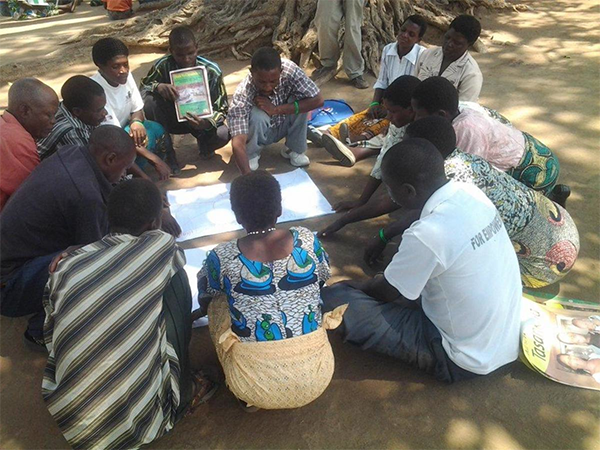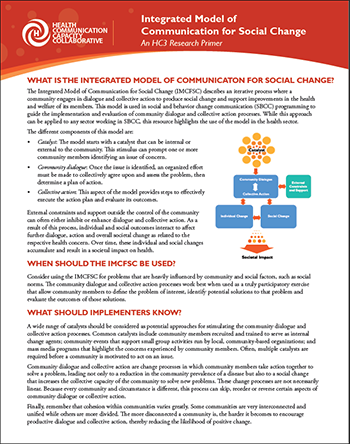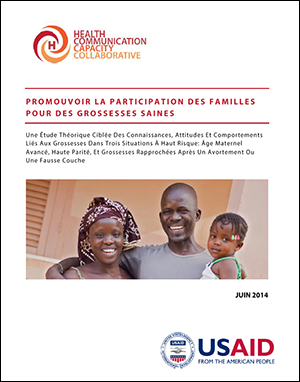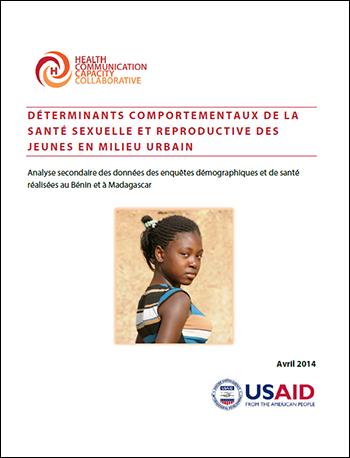
The Extended Parallel Processing Model
The Extended Parallel Processing Model (also widely known as…

Health Communication in the Curriculum webinar
On September 5, 2014 the first HC3 University Initiative Webinar was conducted on Health Communication Pedagogy.

Healthy Timing and Spacing of Pregnancy Evidence Review and DHS Secondary Analysis
This report provides an evidence review and DHS secondary analysis on women of advanced maternal age and high parity pregnancies.

Gender Transformative Approaches
Gender transformative approaches (GTA) are programs and interventions that create opportunities for individuals to actively challenge gender norms, promote positions of social and political influence for women in communities, and address power inequities between persons of different genders.

Integrated Model of Communication for Social Change
The Integrated Model of Communication for Social Change (IMCFSC) describes an iterative process where a community engages in dialogue and collective action to produce social change and support improvements in the health and welfare of its members.

Engaging Families for Healthy Pregnancies (French)
Promouvoir la Participation des Familles pour des Grossesses…

Déterminants Comportementaux de la Santé Sexuelle et Reproductive des Jeunes en Milieu Urbain
Analyse secondaire des données des enquêtes démographiques…

The Impact of Community-Level Factors on Condom Use
Community-level factors, ranging from social capital to collective efficacy, play an important role in condom use. This brief highlights key studies demonstrating the impact of community-level factors on condom use in low and middle-income countries.

Health Communication Impact on Condom Use
Condom use can be promoted through various ways within a health communication context, including mass media, entertainment-education, interpersonal communication and school-based interventions. This brief highlights key studies demonstrating the impact of health communication on condom use in low- and middle-income countries.

Impact of Health Communication Across the HIV Treatment Cascade
Current research underlines the importance of interpersonal communication in linkage to care through counseling, both in clinical settings and at patients’ homes.

Impact of Community Level Factors on HIV Outcomes
On July 1, HC3 held the third in a series of four webinars focusing on different aspects of HIV and health communication. Presentations focused on community level factors shown to impact HIV, what they are and what effect they have; community-level determinants that potentiate or mitigate HIV outcomes among key populations; and included an example of a community-based project that aimed to reduce HIV transmission and stigma in Mozambique by targeting social and gender factors.
